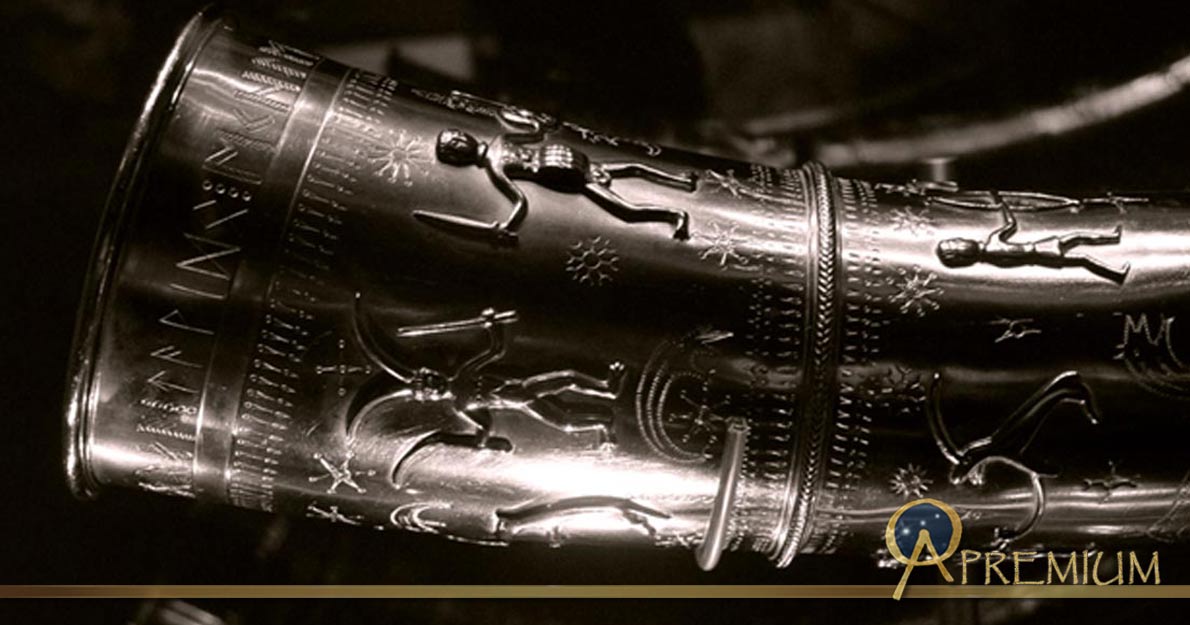On the Origins of the Runes - Symbols, Mysteries and Magico-religious Concepts
One of the most shrouded mysteries of the rune alphabet is its early history. As a matter of fact, no-one really knows how the Elder Futhark came to be. We know that the runes exist and were used by the Ancient Germanic people, but where did they come from?

Codex runicus, a vellum manuscript from c. 1300 containing one of the oldest and best preserved texts of the Scanian law (Skånske lov), written entirely in runes. (Public Domain)
Rock Engravings
The first visible traces of a Northern European mystery tradition date from the Bronze Age. All over Scandinavia engravings decorate the surface of rocks. Engravings are often found on one and the same location, sometimes overlapping. Such locations were frequented year after year, generation after generation, and must have been sacred sites.
The engravings were colored with red pigment. Typical imagery contained ships, sun wheels, people, animals, and trees. Sometimes farming equipment or wagons were depicted. Images show a large degree of stylization. In my opinion, themes fall into two categories; firstly, fertility and secondly, solar worship. And yes, the themes are linked.
The tradition emerged around 1600 BCE, and continued till about 300 BCE, which is well into the Iron Age. From that point onward, the Germanic people supposedly came in contact with the Mediterranean alphabets and may have changed their tradition accordingly.
The First Runic Finds
The two earliest rune finds are also the two most dubious. They both date from the first century CE and stem from the same area. The best known inscription is found on a brooch from Meldorf, dating from the first half of the first century. Its reading is uncertain. Even the number of characters is uncertain. Hence nothing can be said about it. The other one is found on a pottery sherd from Osterrönfeld, dating from the second half of the first century. It contains two characters that are possibly the runes Raido and Wunjo, and a gap in between which may have contained a third character.

Germanic fibulae (or brooches) from the early fifth century – representative image. The Meldorf fibula come from a crematory grave and bears a ruin inscription. (CC BY-SA 3.0)

Rendition of the inscription from the Meldorf fibula. (CC BY-SA 3.0)
Both finds are located in modern day Schleswig-Holstein, Germany, famous for its historical Germanic settlement Haithabu, and are of indigenous manufacture. In Viking Age times, the settlement was known as Hedeby and became an important trading center.
The first certain runic inscription is found in Vimose, which lies on the Danish island Funen. The object is an antler comb, again of local manufacture, dating from circa 160 CE. It reads harja. This establishes the latest date when the runic alphabet developed. And we expect it to have developed fully at that time.

A comb made of antler from around 150 to 200 CE and was found in Vimose on the island of Funen, Denmark. The Elder Futhark inscription reads "Harja", a male name. (CC BY-SA 3.0)
Vimose appears to have been a fertile center of early rune writing. Apart from the comb, there have been found an inscribed buckle, a sword chape, a sword sheath, a spearhead, and one inscription on a wood plane. The buckle is dated to 200 CE and the chape to 250 CE.
Other early finds include the Övre Stabu spearhead dated to around 180 CE, from Norway, and the Thorsberg chape dating to around 200 CE, from the Schleswig-Holstein area. Strikingly, many inscriptions appear on weapon gear. This trend continues throughout the remainder of the Ancient Germanic period (approximately 300 CE till 800 CE).
This is a free preview of an exclusive article from Ancient Origins PREMIUM.
To enjoy the rest of this article please join us there. When you subscribe, you get immediate and full access to all Premium articles, free eBooks, webinars by expert guests, discounts for online stores, and much more!
- The Northern Mysteries Current: Futhark and Mystery Schools of the Viking Age
- Futhark: Mysterious Ancient Runic Alphabet of Northern Europe
- Runes of Power and Destruction: Reading the Cursed Runestones of Sweden
Top Image: Detail of the Elder Futhark inscription on a replica of one of the fifth-century AD Golden Horns of Gallehus found in Denmark (CC BY-SA 3.0)




















